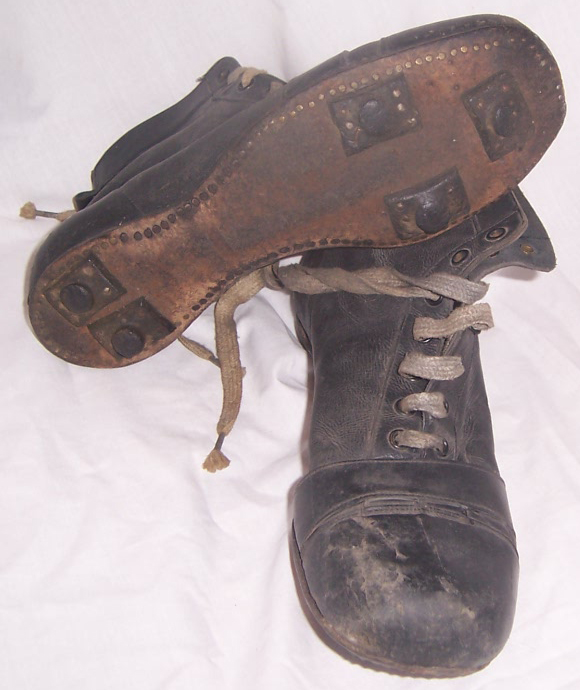The new “Magistra Obra” boots from Nike have just hit the UK market for the modest price of £240. The focus of the football boots’ design is performance: enhanced grip and low weight. The stud shapes have deviated from the classical conical shape into triangles, blades or combinations of different forms. Whilst these shapes presumably aim to enhance the performance of the user, the question I am interested in, is what might they do to the person on the receiving end of a bad tackle?

Nike’s Spring 2015 Highlight collection boot, Magistra Obra Soft Ground. The boot features a combination of moulded and changeable studs. Picture with permission from unisportstore.com
Football boots have experienced high levels of innovation in terms of stud formations and shapes for almost half a century. This is less the case in rugby, where most forwards still use the traditional rounded aluminium screw-in studs, but the backs often use football boots for their superior lightness. Since this cross-over of boots frequently happens, it can be argued that safety of stud designs in both sports should be at a similar standard.
If you play or have played rugby or football, please let us know your opinions and experience with stud injuries by filling out this questionnaire.
History
In 1845 rugby wrote its first law about rugby boots stating that “No player may wear projecting nails or iron plates on the heels or soles of his shoes or boots” [1]. Football didn’t allow any protrusions until a rule change in 1891 [2]. Up until the 1950’s most people played football and rugby in either their work or walking boots, sometimes with added wooden bars or leather studs for extra grip. The first screw in (football) studs have been commercially available since 1924.

A pair of rugby boots from around 1900s. The shoes were usually walking or working boots with added studs or bars for grip. Image credit: World Rugby Museum
Shift to performance
The invention of moulded plastics allowed for cheap mass production of football soles with incorporated studs. This type of boot became popular in the 70’s and its lightness added to its popularity. However, compared to the traditional screw in, this type of stud exerts decreased traction. The trade-off between grip and lightness made this type of boot popular amongst footballers and rugby players in hot, dry countries, especially wingers, since a lighter boot could potentially increase the sprinting speed of the player. The ease of forming plastics then encouraged experiments with different stud designs. These experiments explored how to enhance traction whilst not compromising on weight. This led to the development of bladed, instead of rounded, stud shapes introduced by Adidas in the 1990’s. Since then, studs have been formed in numerous different ways, and their traction has been studied extensively [3].
Time to add safety to the list?
The research aiming for the perfectly designed stud configuration with a maximal performance output has led to concerns amongst medical researchers. Hall & Riou [4] point out several cases of severe laceration injuries caused by similar stud configurations. Outside of academic research, examples of injuries caused by studs are plentiful. Famous is the case of Wayne Rooney, who has suffered both a head and thigh wound [5] due to contact with bladed boots.

Wayne Rooney shows his head wound after coming into contact with a team mate’s boot during training. Picture: Facebook
I am currently doing a PhD investigating the effect of studded footwear design in these types of skin laceration injuries in football and rugby. My research aims to determine the risk factors associated with stud shapes and configurations and prevent unnecessary injuries in football as well as rugby. The earlier mentioned questionnaire is part of the research and it would be great to read your comments on this subject.
Click here to fill out the questionnaire
[1] World Rugby Museum
[2] Football Boots.co.uk
[3] Barry, B. & Milburn, P. (2013). Tribology, friction and traction: understanding shoe-surface interaction. Footwear Science, 5(3), pp.137–145.
[4] Hall, M.J. & Riou, P. (2004). Football blades: a cause for concern. British journal of sports medicine, 38(5), p.642.
[5] BBC Sport
Picture credits timeline, from left to right
– World Rugby Museum
– Adifansnet
– AdiPURE
– Vernon Chan
